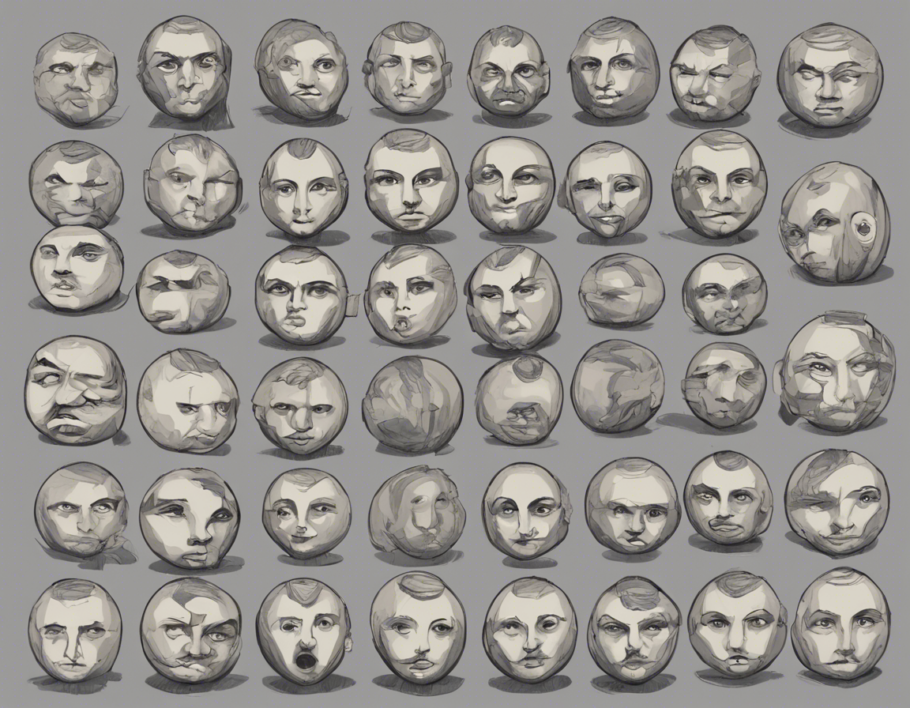Introduction to the Concept of Faces in Geometry
In the realm of geometry, the term “face” often refers to a two-dimensional surface of a three-dimensional shape, such as a polyhedron. Faces play a crucial role in defining the characteristics and properties of various geometric figures. However, when it comes to three-dimensional shapes like spheres, the concept of faces becomes slightly more abstract and non-traditional.
Defining a Sphere and its Properties
A sphere is a perfectly round three-dimensional object, where all points on its surface are equidistant from its center. Unlike polyhedrons, which have flat polygonal faces, a sphere does not have flat surfaces or edges. Instead, it has a single continuous, curved surface, making it distinct from other geometric shapes.
Understanding the Notion of Faces in Spheres
Contrary to common geometric interpretations, a sphere does not have traditional faces in the same sense as polyhedrons. In the context of spheres, a “face” can be conceptualized as the entire curved surface of the sphere. This is in contrast to polyhedrons, where faces are individual flat surfaces that connect to form the shape. In essence, a sphere technically has one continuous face that wraps around the entire object.
Exploring the Uniqueness of Spheres
The seamless and unbroken surface of a sphere distinguishes it from other geometric figures. While polyhedrons have distinct flat faces that meet at edges and vertices, a sphere lacks these defining features. This unique characteristic of spheres makes them versatile and prevalent in various fields, including mathematics, physics, and even art and design.
Properties and Characteristics of Spheres
-
Symmetry: Spheres exhibit perfect symmetry, with every point on the surface equidistant from the center. This uniformity makes spheres ideal for applications where symmetry is essential.
-
Volume and Surface Area: The volume of a sphere is calculated using the formula V = (4/3)πr^3, where r is the radius of the sphere. The surface area of a sphere is given by A = 4πr^2, where r represents the radius.
-
Enclosing Space: Spheres are efficient shapes for enclosing the maximum volume with the least surface area. This property makes them valuable in fields such as packaging and structural design.
-
Geodesic Shape: The shape of a sphere is often utilized in geodesic domes and structures due to its optimal distribution of stress and weight-bearing capacity.
Applications of Spheres
-
Planetary Bodies: Spheres are used to model and represent celestial objects like planets, stars, and moons due to their natural round shape.
-
Sports Equipment: Spherical shapes are common in sports equipment like balls used in soccer, basketball, and baseball, enabling smooth and predictable motion.
-
Astronomy: Spheres play a significant role in astronomical calculations and celestial mechanics, allowing for simplified models and simulations of celestial bodies and their movements.
-
Liquid Containers: The shape of a sphere minimizes surface area while maximizing volume, making it an efficient design for liquid containers like water tanks and storage vessels.
Frequently Asked Questions (FAQs)
-
Do spheres have edges or vertices like polyhedrons?
No, spheres do not have edges or vertices. They have a continuous, curved surface without any sharp corners or boundaries. -
How do you calculate the surface area of a sphere?
The surface area of a sphere can be calculated using the formula A = 4πr^2, where r is the radius of the sphere. -
Can a sphere have more than one face?
No, by definition, a sphere has a single continuous face that wraps around its entire surface. -
What is the relationship between a circle and a sphere?
A circle is a two-dimensional shape that lies on the surface of a sphere. The circumference of a circle is related to the radius of the sphere. -
Are there real-world examples of perfect spheres?
While natural objects may not be perfectly spherical, celestial bodies like planets and stars often exhibit spherical characteristics. -
How are spheres used in computer graphics and modeling?
Spheres are fundamental shapes used in computer graphics to create smooth surfaces and model objects with round features. -
What is the difference between a sphere and a spheroid?
While a sphere is perfectly round, a spheroid is elongated along one axis, resulting in a shape that is like a sphere but flattened or oblong. -
In what ways are spheres utilized in architecture and design?
Spheres are employed in architectural design for structures like domes, arches, and spherical buildings, offering structural strength and aesthetic appeal. -
Can you cut a sphere into different shapes or sections?
Since a sphere has a continuous surface with no edges or corners, it cannot be divided into distinct sections like polyhedrons. -
What makes spheres unique among geometric shapes?
Spheres stand out for their smooth, curved surfaces, perfect symmetry, and efficiency in volume-to-surface-area ratio compared to other geometric figures.

